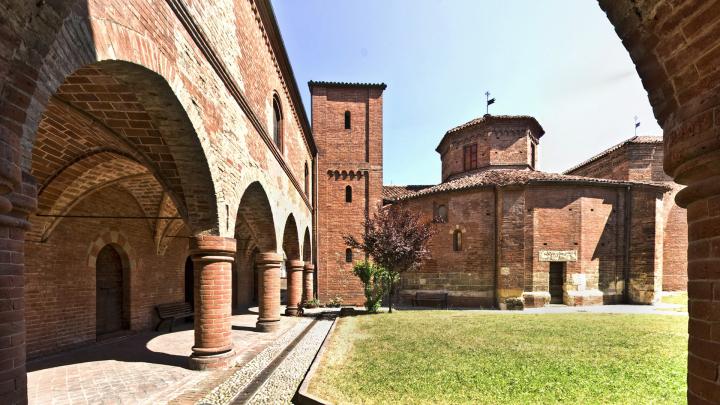On the wave of popular enthusiasm for the first Crusade and the worship of Santo Sepolcro of Jerusalem, in the year 1000, the bishop Landolfo began the construction of a circular building, the copy of a holy site, in order to meet the spiritual needs of the pilgrims who were able to make the pilgrimage to the Holy Land. Over the centuries, a three-part “U” shaped church was also added to the religious building to form an internal cloister. Only later, during the 15th century, a final square-shaped building was added to the architectural complex. Restorations and modifications carried out between the 18th and 19th centuries hide the structure’s medieval characteristics, but thanks to recent recuperation interventions, the church’s ancient body has been brought to light. Today, on the side of the cloister, in the area of the ancient Ospedale dei Pellegrini (Pilgrim’s Hospital), the Museo Archeologico di Asti (Archelological Museum of Asti) has been installed; rich in Etruscan and Italic relics, is also houses a hall dedicated to paleontology and ancient Egypt.
Ticket prices
Si

